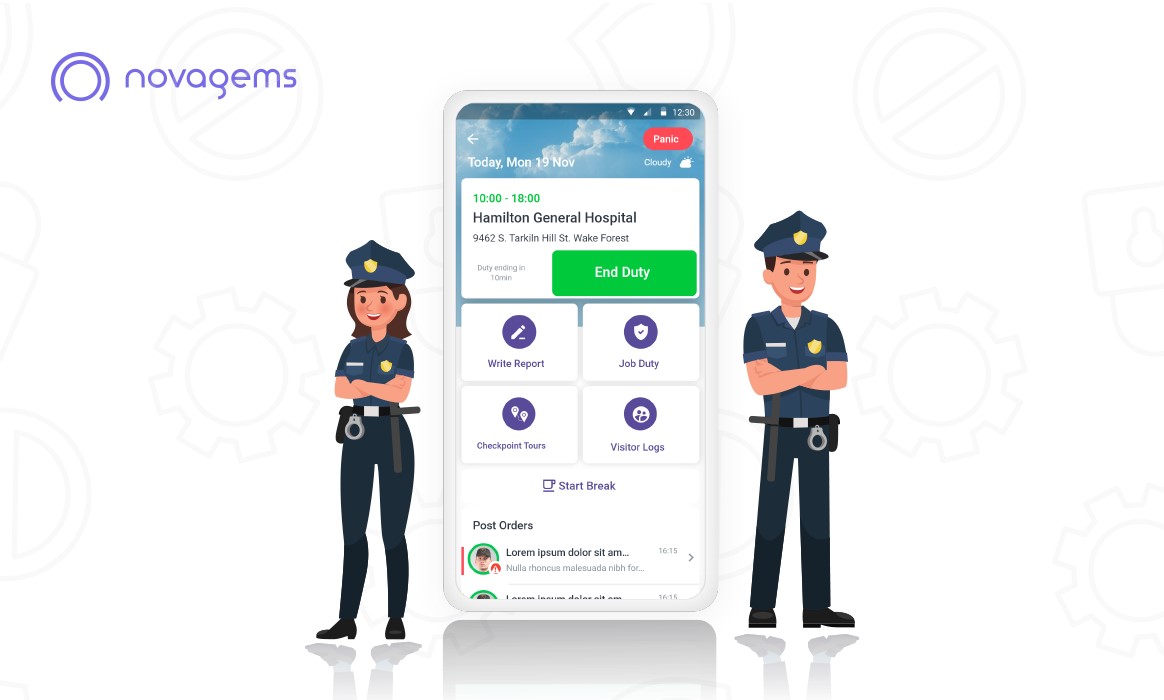In the hustle and bustle of urban life, ensuring safety is a top priority. Cities are vibrant, but they also present unique security challenges. Suppose you are strolling through your city at night, the vibrant hum of life still buzzing, but with a layer of tranquility beneath it. Not an eerie quiet. But a confident calm, knowing watchful eyes are safeguarding your steps. This, my friends, is the promise of smart cities, where technology and human vigilance collide to create safer streets for everyone. And one crucial cog in this security machine? Checkpoint systems for security guards.
The Role of Checkpoint Systems in Urban Safety
Imagine guards scanning checkpoints like hidden buttons, leaving a digital trail of their patrol path. No more wondering if back alleys got checked, the system tells the story. This data becomes gold, revealing high-traffic areas, potential trouble spots, guiding future patrols like a city-wide map constantly being updated with guard footsteps.
This proactive approach isn’t just about responding to trouble, it’s about stopping it before it starts. Think of a park with unusual late-night activity – the system sees it, alerts guards, and bam! Potential problems nipped in the bud.
But how does it work? Let’s dive into the magic:
Guard Patrols, Powered Up: Gone are the days of pen-and-paper logs. Guards scan checkpoints equipped with QR codes or RFID tags, leaving a real-time digital trail of their movements. This GPS-tagged record paints a clear picture of their patrol, ensuring every corner gets the vigilant eye it deserves. No more wondering if that alleyway got checked, the system tells the story, loud and clear.
Data Speaks Volumes: Remember that missed turn you made during patrol? The system remembers too. This data becomes a goldmine of insights, revealing patterns, vulnerabilities, and areas needing extra attention. Think of it as a city-wide map, constantly being updated with the ink of guard patrols. Highlighting potential trouble spots before they become real trouble.
Proactive, Not Reactive: With data in hand, security planning takes a leap forward. Instead of simply responding to incidents, systems can predict and prevent. Imagine identifying a street with unusually high foot traffic after dark – wouldn’t it be smart to allocate more patrols there, just in case? This is the power of proactive security, and checkpoints are its fuel.
Beyond Checkpoints, Building Trust: Transparency is key. With digital records readily available. Citizens can see the invisible web of vigilance surrounding them. This builds trust and confidence, knowing your city isn’t just bustling with life. But also with dedicated guardians constantly scanning its pulse.
Understanding the Urban Security Landscape
Cities, with their bustling streets and diverse populations, require specialized security measures. Urban security is not just about preventing crime but also managing crowds and ensuring the safety of public spaces. Enter the security guard checkpoint system – a vital tool in maintaining order.
Imagine a city like a giant beehive—lots of movement, lots of different activities. To keep things running smoothly, we need to understand the patterns and potential challenges unique to city life. These systems help prevent crime by being visible and controlling access points. They also play a crucial role during big events, making sure everyone stays safe in crowded city centers.
Building smart cities isn’t just about shiny buildings and lightning-fast Wi-Fi. It’s about creating a future where everyone feels safe and secure. Checkpoint systems, woven into the fabric of the urban landscape, are a powerful step towards that future. They aren’t just devices. They’re promises of a night stroll without fear, a child’s laughter echoing without worry, and a city that sleeps soundly. Knowing its protectors are awake.
Advancements in Checkpoint Technology for Urban Environments
When we talk about advancements in checkpoint technology for urban environments. We’re essentially discussing how the tools we use to keep cities secure are getting smarter and more efficient.
Integration of AI and IoT: Imagine your security system not just being a set of cameras but also a smart detective. Artificial Intelligence (AI) helps the system understand patterns and recognize unusual activities. It’s like having a digital brain that can spot potential issues before they happen. Additionally, the Internet of Things (IoT) connects different devices, allowing them to share information and work together seamlessly.
Enhanced Surveillance Solutions: Picture high-tech cameras keeping a watchful eye over busy streets. These cameras are not just regular ones; they provide clear images and can be monitored in real-time. It’s like having extra sets of eyes that never get tired, helping security personnel respond quickly to any situation.
Tackling Crime Prevention in Urban Areas
Crime prevention in cities requires a proactive strategy. Security guard checkpoint systems act as deterrents, dissuading potential wrongdoers. Visible security measures and controlled access points contribute to a safer urban environment.
Crowd Control and Event Security in City Centers
City centers often host events that draw large crowds. Managing these crowds is a critical aspect of urban security. Checkpoint systems play a crucial role in controlling access to event venues. Ensuring the safety of participants, and preventing overcrowding.
Conclusion
In conclusion, the synergy between security guard checkpoint systems and urban safety is crucial for creating smart cities with safer streets. Technological advancements, proactive crime prevention, and seamless integration with urban planning are key elements in this evolving landscape.

